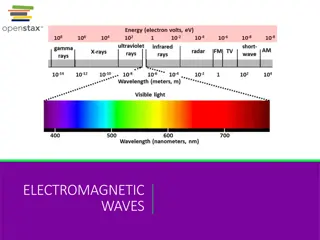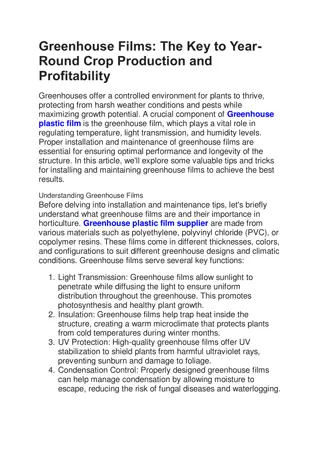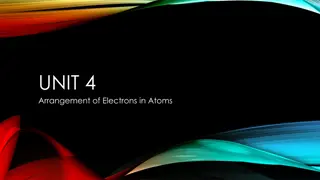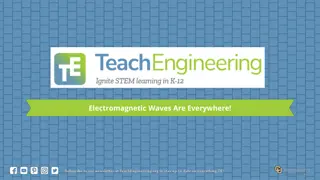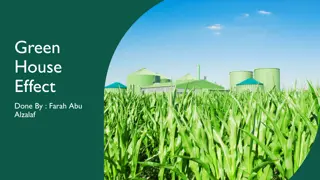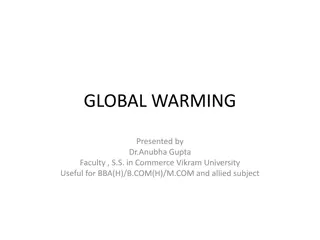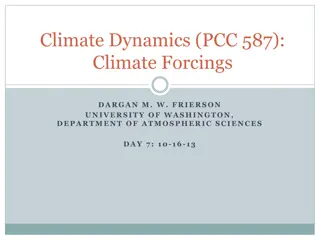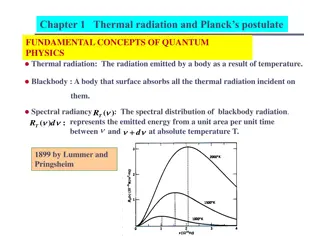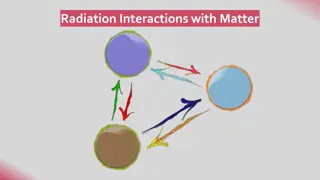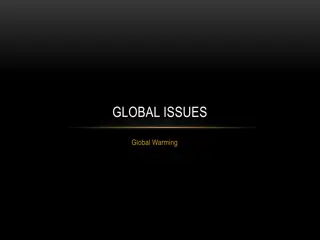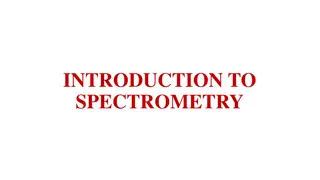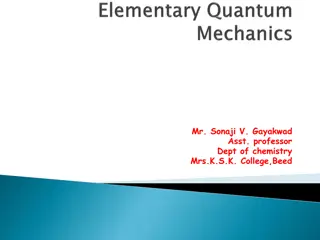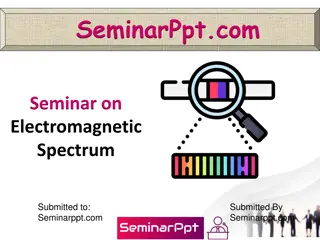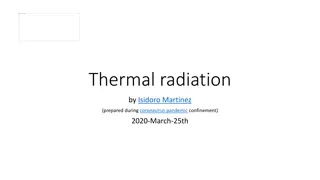Understanding the Greenhouse Effect and Electromagnetic Radiation
The presentation delves into the science behind the greenhouse effect, explaining how human activities contribute to the enhanced greenhouse effect. It explores the composition of Earth's atmosphere, the role of greenhouse gases, and the impact of burning fossil fuels. Additionally, it covers the basics of electromagnetic radiation, including its characteristics like wavelength, frequency, and energy levels. Gain insights into the fundamental principles governing these phenomena.
Download Presentation

Please find below an Image/Link to download the presentation.
The content on the website is provided AS IS for your information and personal use only. It may not be sold, licensed, or shared on other websites without obtaining consent from the author. Download presentation by click this link. If you encounter any issues during the download, it is possible that the publisher has removed the file from their server.
E N D
Presentation Transcript
Educator Instructions REMOVE THIS SLIDE BEFORE PRESENTING Customize this presentation to fit your needs. Please add or remove content.
ATMOSPHERE & GREENHOUSE GASES
HUMAN BURNING OF FOSSIL FUELS IS A MAJOR CONTRIBUTOR TO THE ENHANCED GREENHOUSE EFFECT The enhanced greenhouse effect caused by a greater buildup of carbon dioxide and methane (and other greenhouse gases) leads to less radiated heat leaving the atmosphere, resulting in warmer global temperatures.
ATMOSPHERE Made up of gases. These gases regulate energy transmission through the atmosphere.
ILLUSTRATION OF EARTHS ATMOSPHERE Image Source: NASA http://earthobservatory.nasa.gov/IOTD/view.php?id=7373
DIAGRAM OF EARTHS ATMOSPHERE Source: http://www.groundinstructor.com/mod/page/view.php?id=970
UNDERSTANDING THE SCIENCE OF THE GREENHOUSE EFFECT In order to understand the basic science of the greenhouse effect, two concepts must be explained: the science of light and the structure of the gases in our atmosphere.
UNDERSTANDING THE SCIENCE OF LIGHT Let s begin with light. We ll use light here to refer to all electromagnetic radiation (EMR) which includes many kinds of light such as ultraviolet light, infrared light, X-rays, microwaves and many more. Light can be understood by three basic characteristics: wavelength, frequency and energy. Light = Electromagnetic Radiation = EMR
EACH WAVELENGTH HAS A FREQUENCY AND ENERGY ASSOCIATED WITH IT o Light (or EMR) has an incredible variation in wavelength o Very small wavelength and very energetic light like X-rays are very high energy o Radio and TV waves are huge often meters long, and of very low energy
127,000 MEGAJOULES Manufacturing 1 ton of polyester fiber consumes up to 127,000 megajoules, and in 2010, 64 billion pounds of polyester were produced.
That's enough energy to power 93 MILLION US HOMES FOR 1 YEAR
IN-CLASS ACTIVITY Demonstrating the wavelength, frequency, and energy of light (Download PDF) Wavelength Activity (Video Demonstration) POGIL Activity: The Earth s Greenhouse (Download PDF) About POGIL Activities: You can learn more about POGIL at: https://pogil.org/about What is POGIL? from The POGIL Project on Vimeo.
This link to a website called EXPLAINTHATSTUFF! provides an overview of the natural greenhouse effect http://www.explainthatstuff.com/globalwarmingforkids.html MORE INFORMATION AND RESOURCES The Department of Geosciences at Georgia State University has published a set of labs that may be helpful. Of particular interest are the following: Lab 2 Stratospheric Ozone http://sites.gsu.edu/geog1112/lab-4/ Lab 3 The Troposphere http://sites.gsu.edu/geog1112/the-troposphere/ NASA A Year in the Life of Earth s CO2 (3:10 minutes) https://www.youtube.com/watch?feature=player_embedded& v=x1SgmFa0r04 An overview of the Earth's atmosphere http://www.groundinstructor.com/mod/page/view.php?id=970


